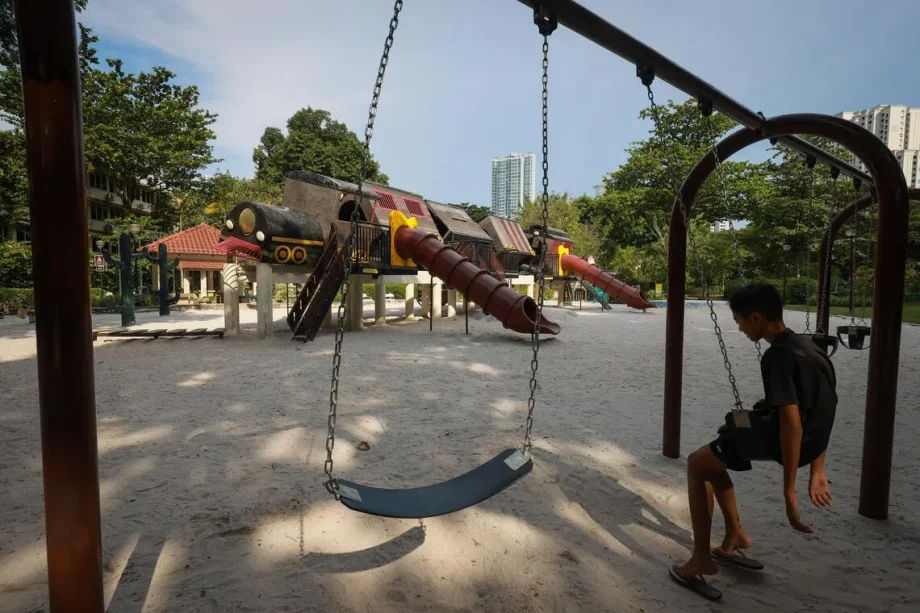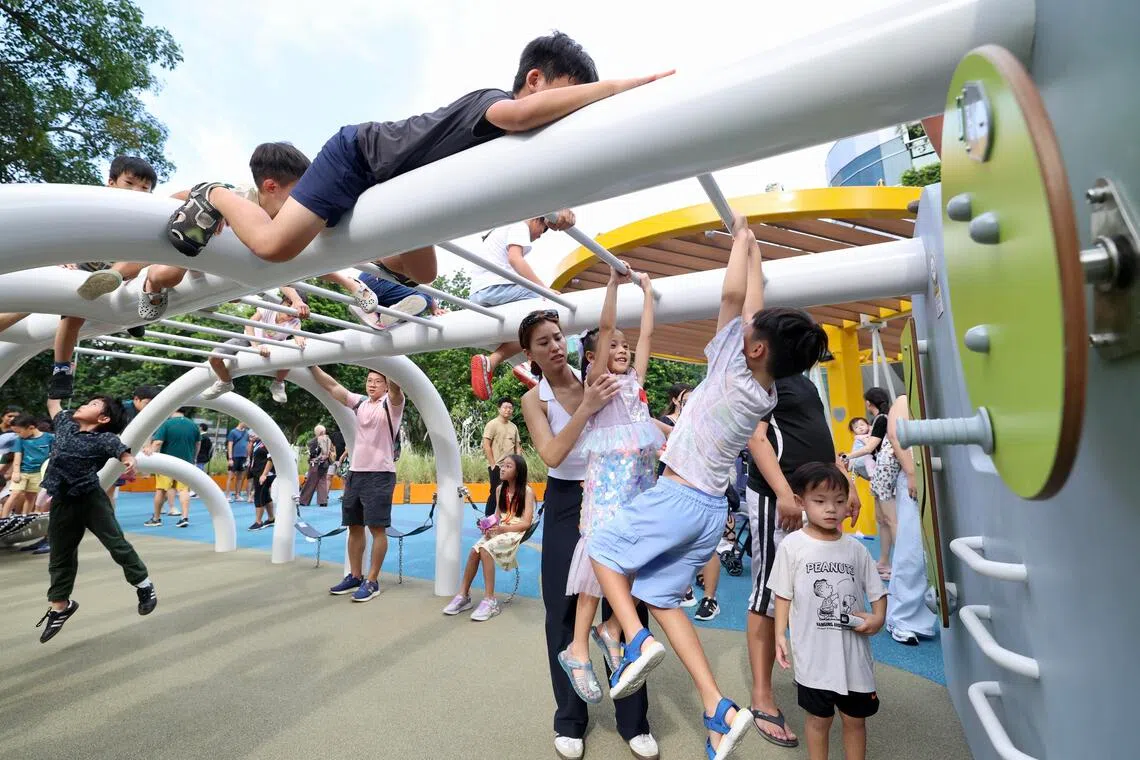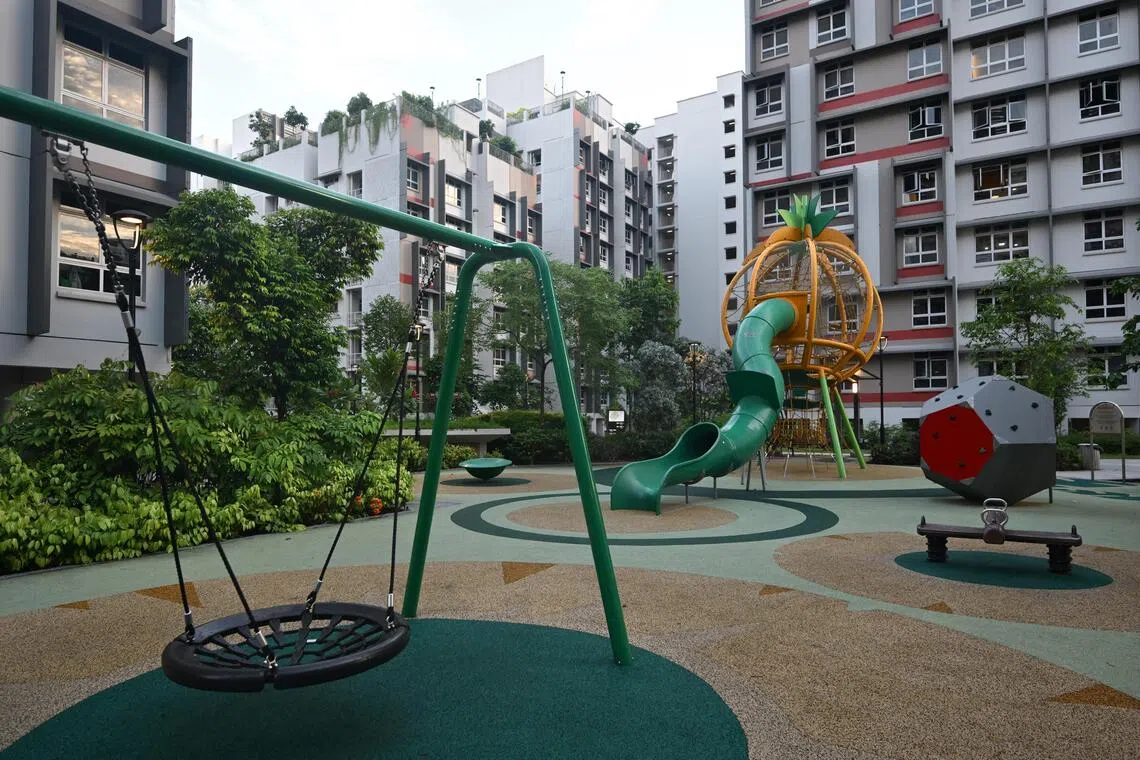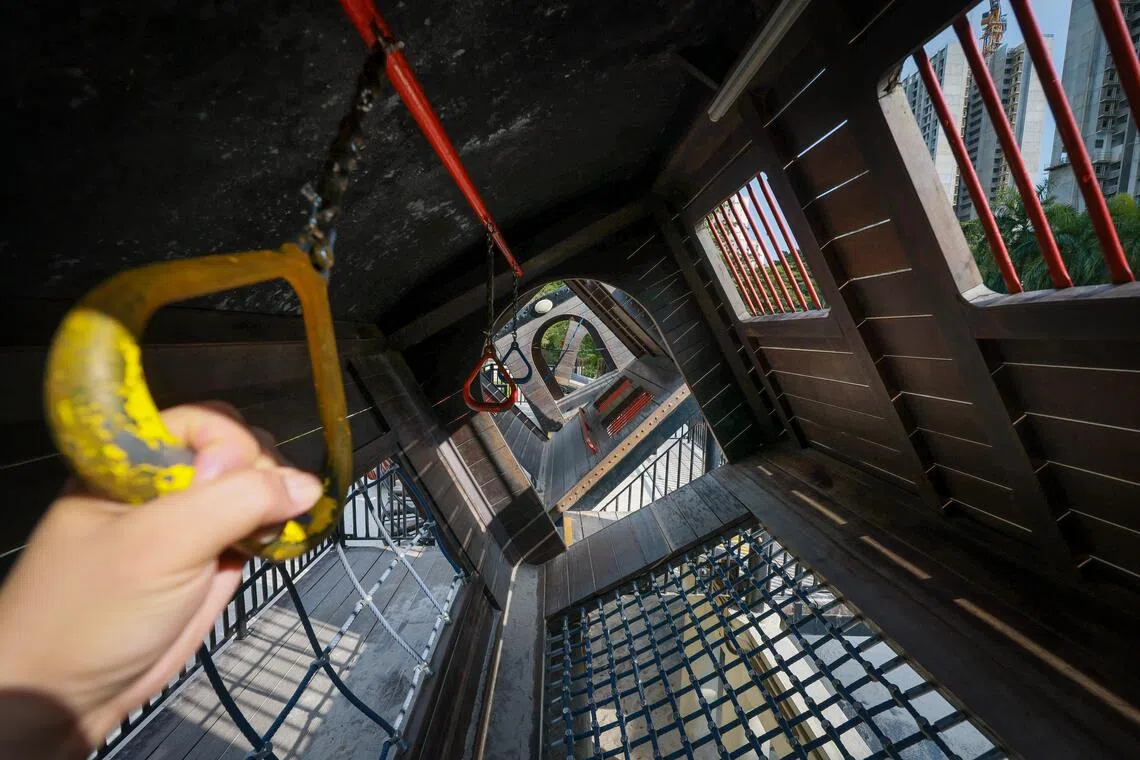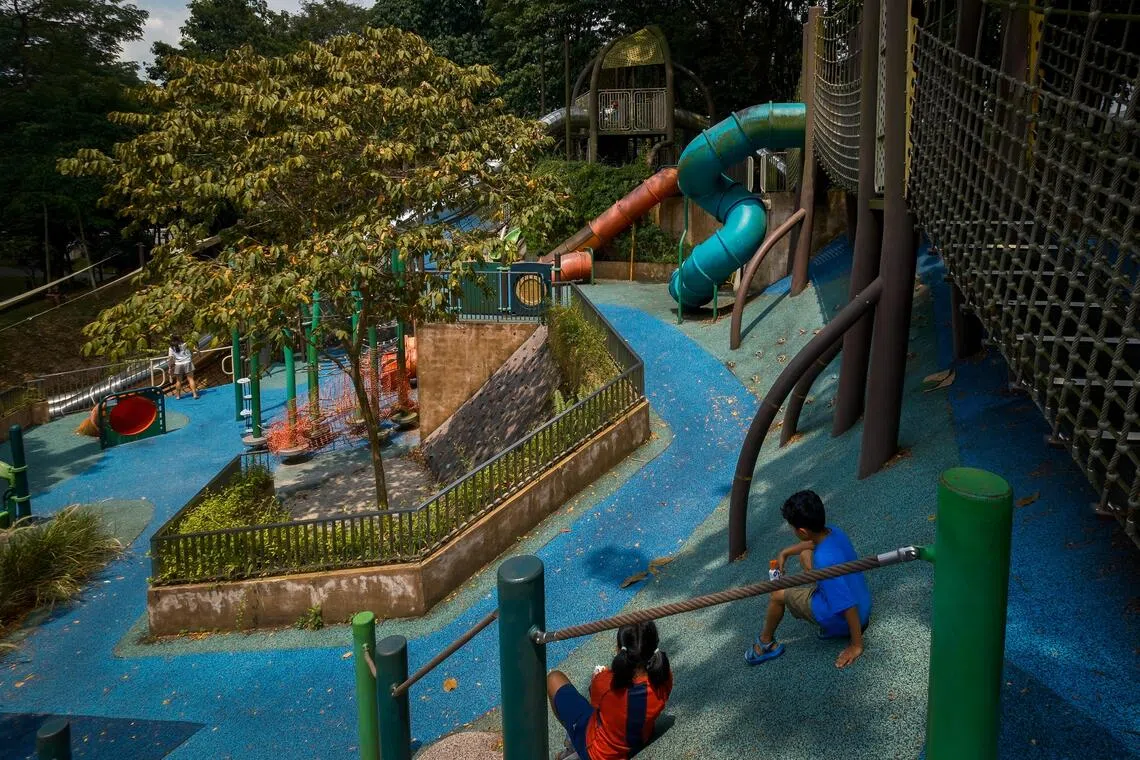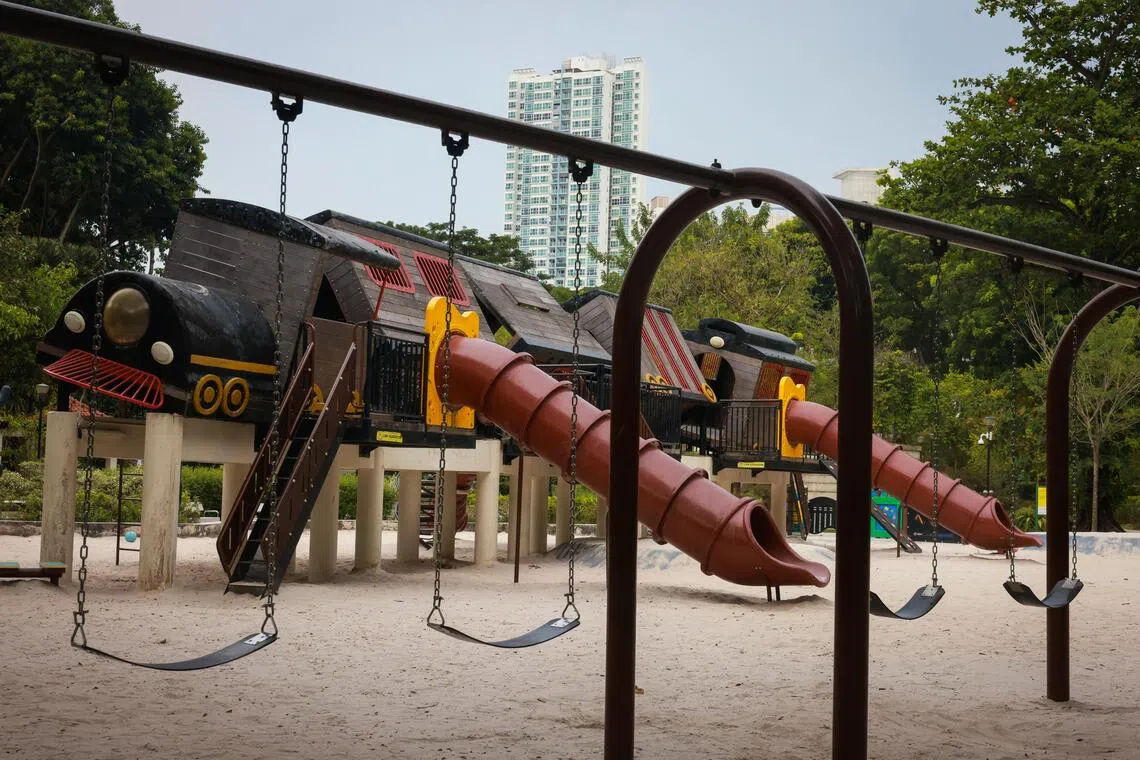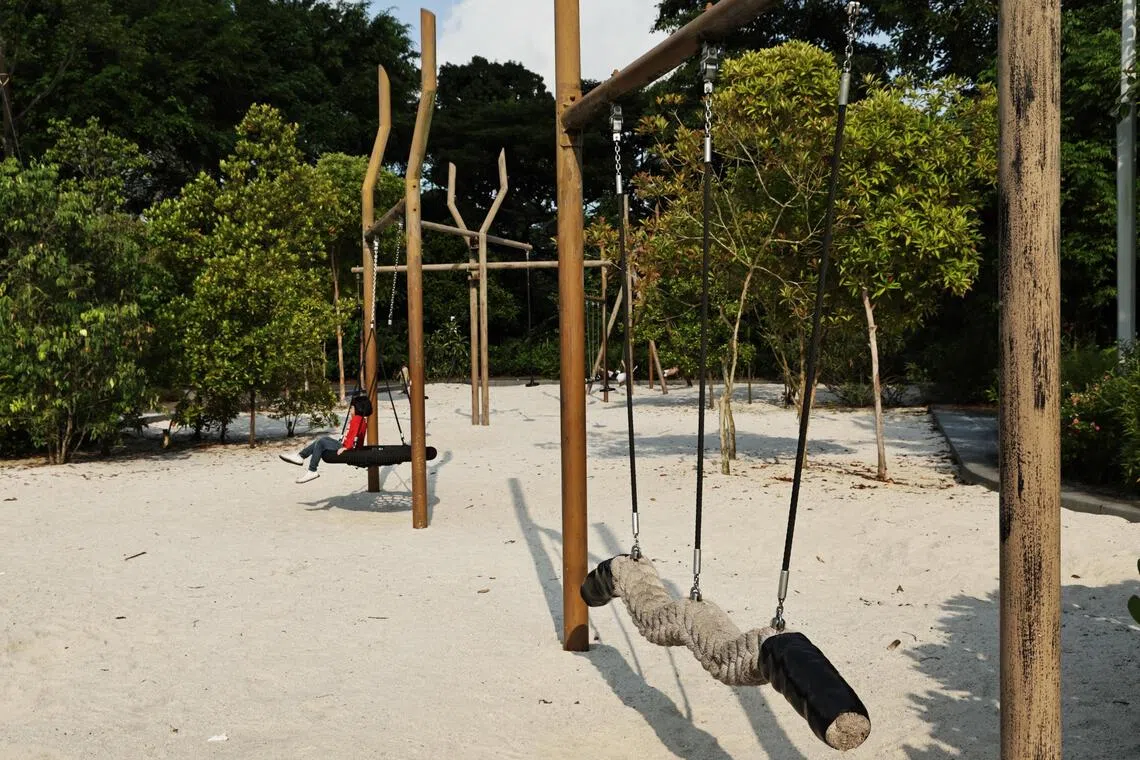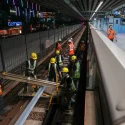SINGAPORE – Few thrills compare with letting loose on a swing. With the wind tickling your face and momentum propelling you through the air, it sometimes feels like the closest thing to flying.
Many Singapore residents have fond memories of such carefree hours at the playground, waiting their turn on those coveted seats, kicking their feet and watching the sand peel away as they are lifted higher and higher into the sky.
Now all grown up, they are starting to notice that the swings of their childhood have gradually faded from view. It is an observation that has been raised in various forums – from the online agora of Reddit to, most recently, Parliament.
During November’s session, Sembawang GRC MP Ng Shi Xuan asked the Ministry of National Development (MND) how many public playgrounds there are in Singapore, and how many of them have swings and sand play areas. He also wanted to know how such figures compare with a decade ago.
In a written reply, Minister for National Development Chee Hong Tat said there are around 2,800 public playgrounds in HDB estates and parks, adding that the number of playgrounds has increased over the years. He did not specify how many of them include swings.
However, playground manufacturers tell The Straits Times that as living spaces in Singapore grow ever tighter, some playgrounds lack sufficient space for swings.
Mr Jason Sim, 49, managing director of local playground and landscape consultancy Playpoint, says: “Swings have become less common because they require a large safety zone, which cannot overlap with the safety zones of other play equipment. As a result, a single set of swings can easily take up almost half the playground area, making them less efficient for compact sites.”
Under the 2017 edition of Singapore Standards 457, an industry-wide guide intended to reduce injuries by guiding the design, installation and maintenance of public-use play equipment, swings have to meet the following requirements: The safety zone surrounding the front and rear of a swing set has to be at least two times its height. That means a 2m-tall swing needs a buffer of around 8m.
Other specifications include the materials used to build playgrounds, as well as a formula to limit a merry-go-round’s maximum speed.
According to MND, all vendors installing playgrounds must comply with these standards. Safety auditors from third-party certified playground safety inspectors also conduct checks to ensure requirements are met.
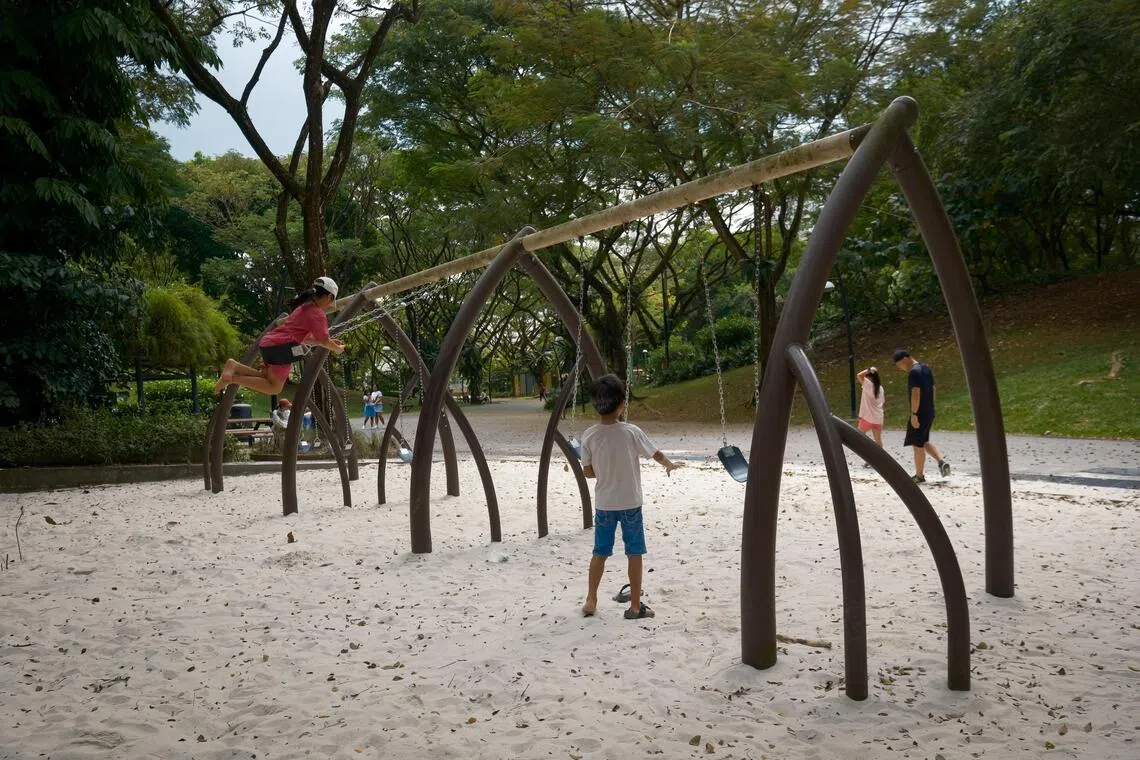
Swings like these are becoming less common in certain parts of Singapore, according to playground manufacturers.
ST PHOTO: GAVIN FOO
Still, guidelines alone cannot entirely stamp out safety concerns, and incidents do crop up occasionally.
In September, community news portal Stomp reported that a boy was injured while using a swing in Bishan. In June, a nine-year-old boy had to get his ruptured kidney removed after falling from the monkey bars and hitting a plastic partition in Bukit Batok West. In December 2024, a two-year-old girl was hit on the head by a falling metal bar at a Sengkang playground.
According to MND, there was an annual average of 7,000 instances of public feedback on playgrounds from 2022 to 2024, amounting to 0.5 per cent of total annual municipal feedback. Common concerns centred on damaged or faulty playground components, as well as the cleanliness of the playgrounds.
Maintenance aside, Singapore’s playgrounds have lots of room for improvement, says senior occupational therapist Jewel Yi, 34. She is the director of Little Marvels – a private clinic which supports children of various needs – and documents ineffective playground design on her Instagram account, @fixourplaygroundssg.
A therapy session with a seven-year-old child with developmental differences first sparked her concerns. “I had hoped her parents could continue practising gross motor and play skills with her outside the therapy gym, but I quickly realised that many playgrounds are designed in ways that don’t make developmental sense,” she recounts.
At an age-appropriate playground, she watched the child climb up with some assistance. But upon reaching a platform, she was unable to hoist herself up independently. She had to pull herself up a 2.5m height without proper handholds or footholds, as the smooth, oversized poles in place offered little grip.
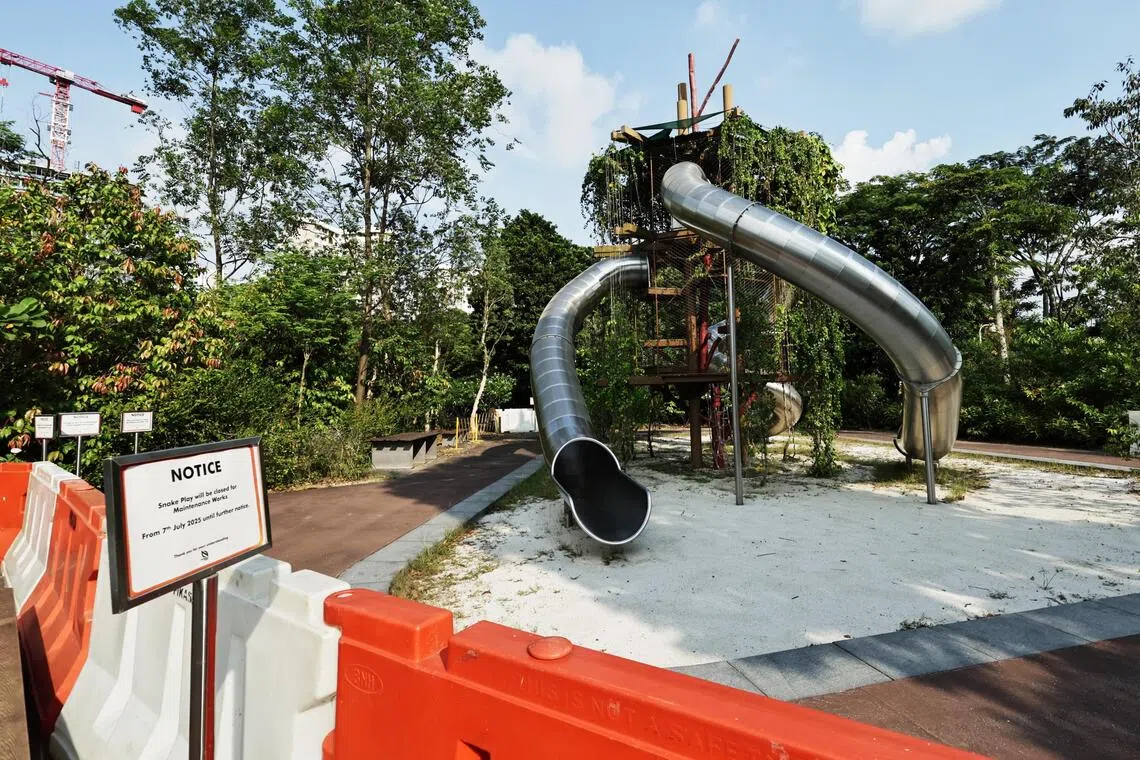
Part of Forest Ramble in Jurong Lake Gardens was closed for maintenance works in November.
ST PHOTO: KELVIN CHNG
“I’m not sure how her mum was supposed to help her navigate these spaces. Even for neurotypical children, such designs can be risky and unintuitive,” Ms Yi adds.
It took multiple visits to various playgrounds before she was able to successfully locate a swing for this pupil, though when she finally tracked one down, it was far from the girl’s home, making regular access difficult.
“She is just one example, but in my work with many families, I often recommend finding playgrounds that offer intense movement input, yet it is surprisingly difficult to find any nearby that truly meets those needs.”
She says many modern playgrounds seem built for visual appeal rather than meaningful, child-centred play. They are hampered by close-ended designs with poor play flow – some “stairs to nowhere”, for instance, leave children with few safe or rewarding payoffs like slides, while playgrounds that offer only one mode of exploration limit imaginative movement.
As she and other parents have discovered, the devil is in the details. Overly large poles, lack of proper grip points and unsafe gaps high above ground make such spaces challenging for children with additional needs, as well as neurotypical kids with less upper-body strength.
Mr Wayne Lai, a software engineer in his mid-30s who started LetzGoPlay, a database of over 1,500 playgrounds in Singapore, notes that while many playgrounds here are thoughtfully designed, toddlers like his three-year-old daughter struggle with certain models.
“For example, certain net bridges can be intimidating or difficult for toddlers to cross due to their smaller feet. In such cases, a solid base beneath the netting could help alleviate safety concerns,” he says.
“Some playgrounds also seem to maximise the use of limited space by fitting in too many elements, such as placing swings or sensory play areas under bridges or slides. While creative, this can sometimes result in tight spaces and awkward play flow.”
On the flip side, Ms Yi has also come across playgrounds that overcompensate with designs so safe, they end up being boring. For example, “swings” that function more like low-to-the-ground wiggle chairs with limited movement, or slides so short as to be devoid of thrill.
“When playgrounds lack opportunities for gross motor activity – like climbing, swinging, spinning and hanging – kids miss out on essential physical and sensory input. Over time, this can lead to weaker motor skills or reduced confidence,” she notes.
She also laments the disappearance of sandpits or other soft materials that children can get their hands messy in. Rubber, said to be better in cushioning falls, now dominates playground flooring in Singapore. As a result, “they don’t have a lot of opportunities to express themselves”.

